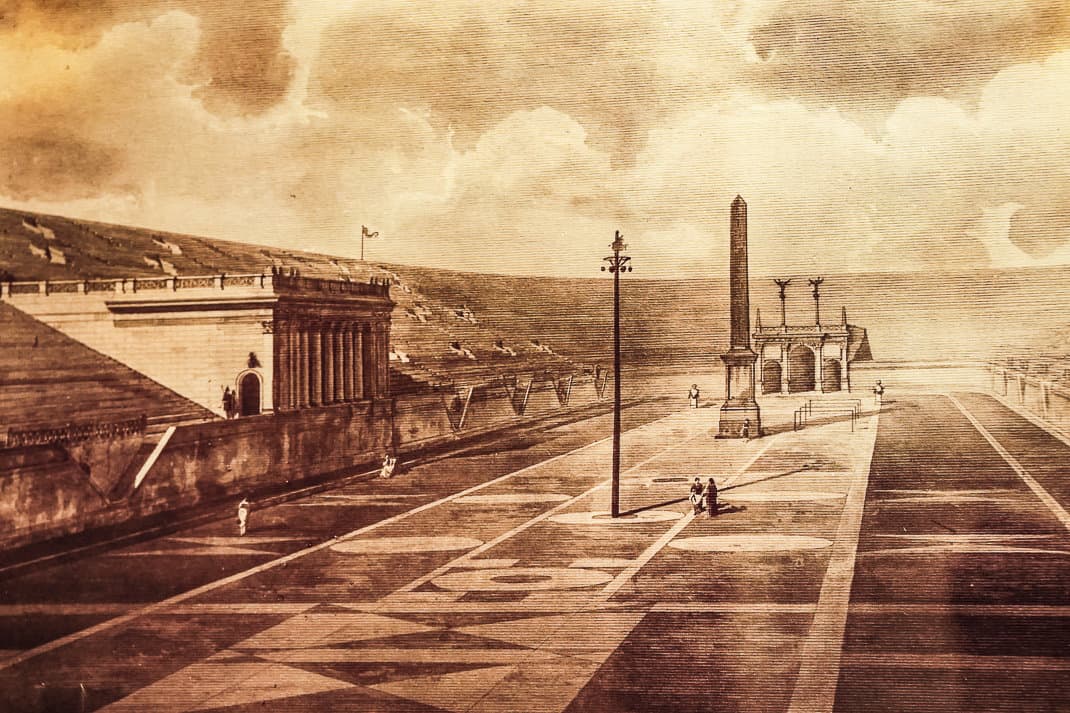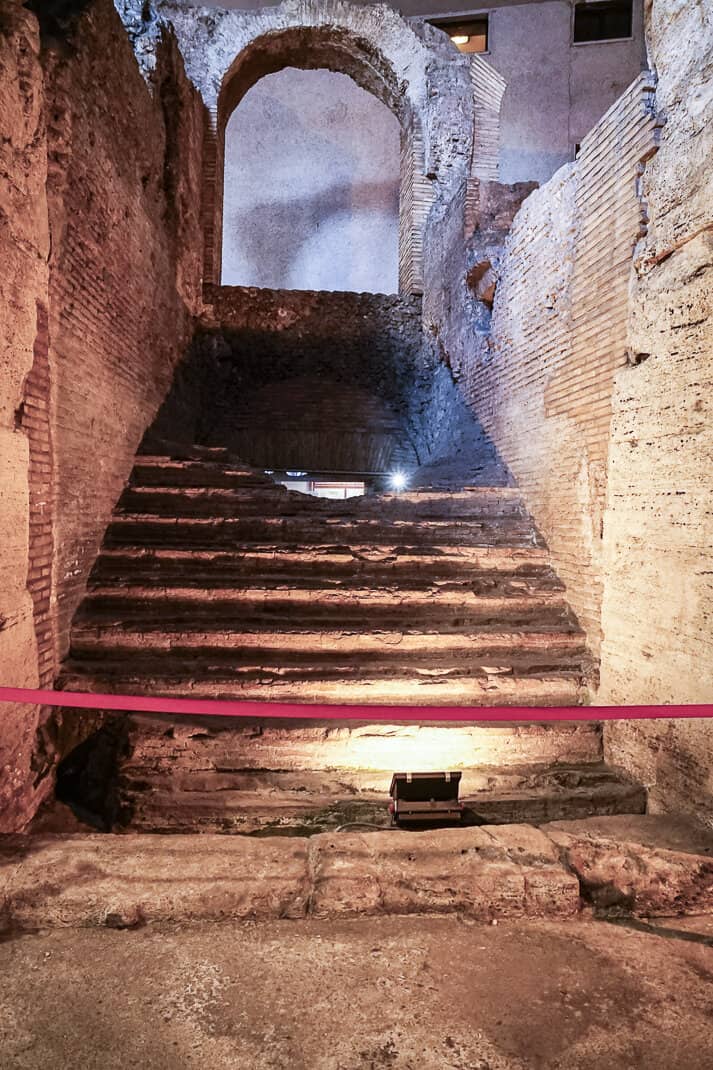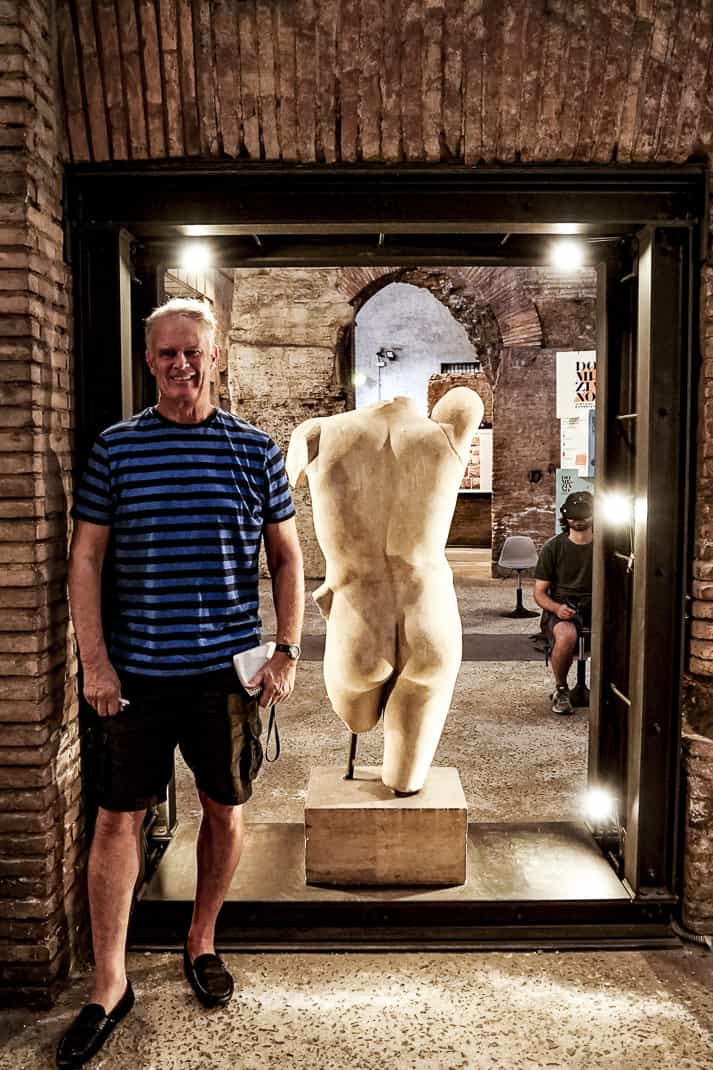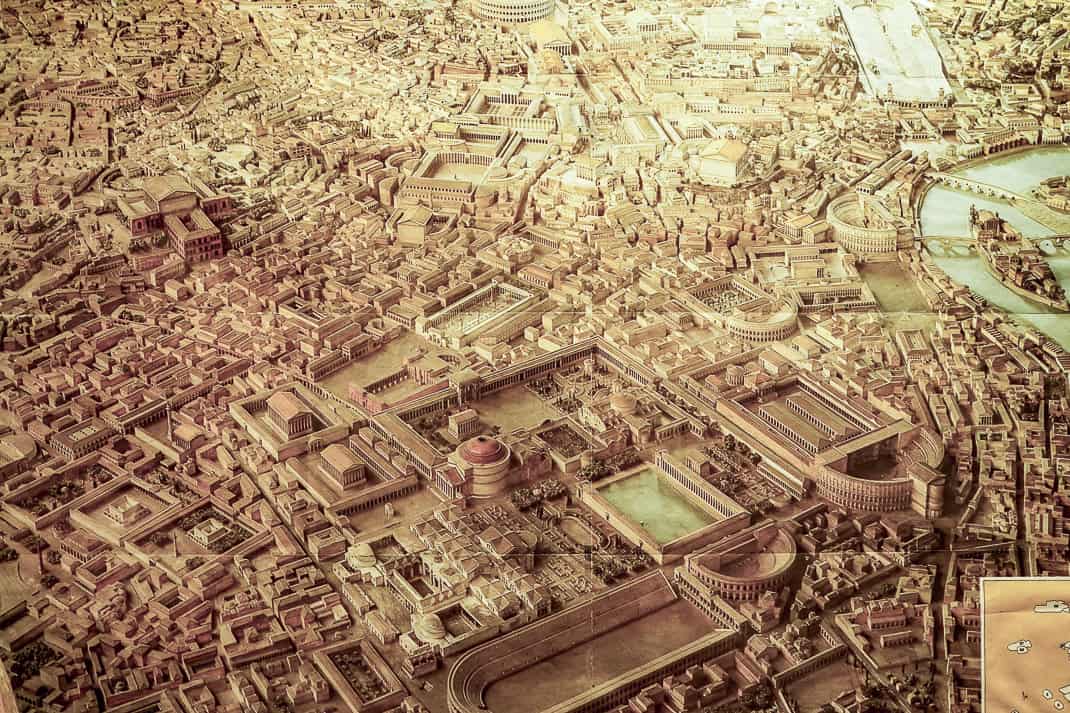Stadio di Domiziano an underground look at Ancient Rome’s athletic past and an odd emperor

I’ve walked in, through and around Piazza Navona too many times to count. My favorite soccer pub is near there. A main bus route goes by there. The best rooftop bar in Rome is above there. What I didn’t know is that during my nine years in Rome I was walking over a sports stadium built only seven years after the Colosseum and a little more than a mile away.
I know. I walked through the stadium’s remains recently.
Stadio di Domiziano location
I never knew Stadio di Domiziano existed. It’s underground. Above it I frequently walked the sidewalks skirting the outside of Piazza Navona. I sat in bars, not knowing that 2,000 years ago Roman athletes were running, wrestling and throwing near that same space.

Neither did many others. It wasn’t until 1936 when some houses along what was one curve of the stadium were demolished that experts discovered part of the main staircase leading to the stands. Archaeologists poured in and discovered parts of sculptures and marble torsos. In the nearly 90 years since, archaeologists uncovered significant portions of a stadium that rivaled the Colosseum in architectural beauty if not size and bloodshed.
The city opened the underground stadium to the public in 2014, shortly after I retired here. Stadio di Domiziano is now a UNESCO World Heritage Site.

The entrance is a single door adjacent to the outside of Navona. Marina, a friend and I walked down a flight of stairs to see a big space under a high ceiling filled with ancient maps, statues and brick archways. It takes a leap of faith to imagine this was a stadium as large as Piazza Navona is now. Matching side-by-side photographs put it in perspective.
Emperor Domitian
Stadio di Domiziano was the brainchild of Emperor Domitian, a paranoid, ruthless autocrat who went down in history as one of Rome’s more inconsequential emperors although that view has softened over time.

Domitian loved sports. He loved the Greeks. He wanted to push Romans into athletics as the Greeks had done. Taking power in 81 AD, he ordered the building of a stadium similar to the one in Greece’s Ancient Olympia. Completed in 86 A.D., it seated 30,000 people, 20,000 less than the Colosseum, and was made oblong 215 meters by 106.
Instead of gladiator games and slaughtering Christians, Domitian used it to hold running events, wrestling matches and javelin throws, not to mention as a place to worship – him. Ancient Rome also used it for military training.

Made of brick, it was the only masonry stadium outside Greece. In 200 A.D. Emperor Constantine declared it one of the most beautiful buildings in Rome. Later in the 3rd century, Emperor Alexander Severus restored it and it remained in use until the 5th century.
The ruins
When we descended the stairs past all the drawings of Ancient Rome, five meters below Piazza Novana’s floor we saw a towering travertine archway 25 feet high that led to the stadium’s main entrance. Nearby was a staircase of four stone stairs that led to another. Admission was free and each ticket was a bone with the section and seat numbers.
The stadium was indeed spectacular in its day. It included an obelisk and marble statues that lined the roof. Some of the busts are on display.

One wall is covered with the faces, names and dates of all Roman emperors. It’s well signed in Italian and English and includes an audio guide. It includes more information about this borderline political hack named Domitian than you ever thought you needed to know.
Some of the little tidbits I learned about him was he liked prostitutes, was a loner and would often sit alone in a room and skewer flies with sharp objects. He was homicidally paranoid and filled his palace with mirrors and shiny objects so he could see anyone stab him in the back.
However, he did boost the economy and the military loved him. But the Senate hated him and he killed any senator he deemed unloyal.
His legacy under Piazza Navona will last much longer.

If you’re thinking of going …
Info: Via di Tor Sanguigna 3, 06-6880-5311, https://stadiodomiziano.com/, 10 a.m.-7 p.m. (Last entry 6:15 p.m.) €9

